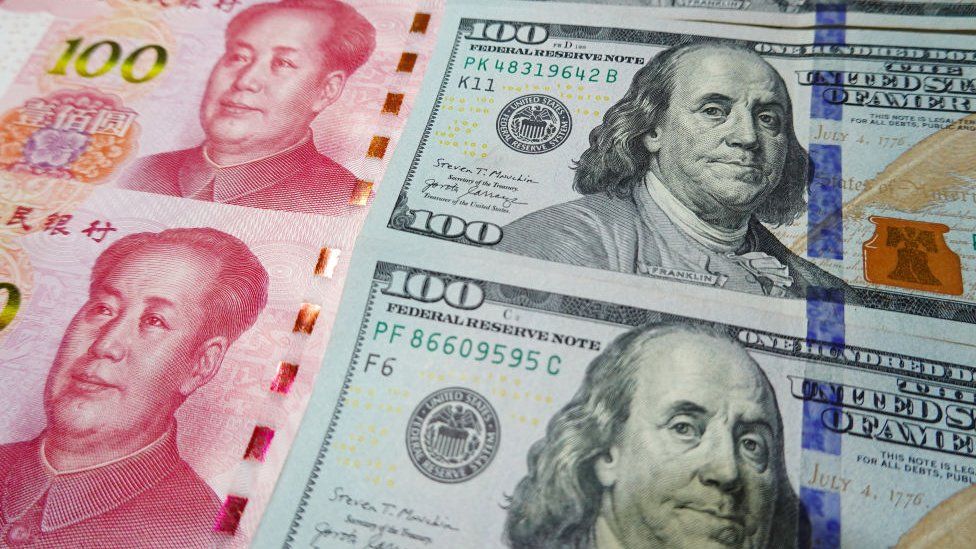How It All Started: A Trade War Gone Wrong
The current global shift away from the U.S. dollar began years ago during the Trump administration. In an effort to address what he called "unfair trade practices," President Trump launched a trade war in 2018, slapping tariffs on hundreds of billions worth of Chinese goods. China responded cautiously at first — but seeds of resistance were planted.
Fast forward to 2025, and a new wave of U.S. tariffs — as high as 145% on some Chinese exports — has accelerated China's efforts to abandon the dollar in favor of its own currency, the yuan.
The trade war, initially aimed at protecting American jobs and industries, has evolved into a global financial realignment no one can ignore. Explore more business stories here.
Why China Is Dropping the Dollar
For decades, China's exporters depended heavily on U.S. dollars for trade. But several key factors have pushed Beijing to change course:
- Weaponization of the Dollar: After seeing how the U.S. froze Russia's reserves during the Ukraine war, China realized it could be next.
- Tariff Escalation: The latest wave of tariffs made it clear that dependency on the U.S. market and dollar system was a strategic risk.
- Rise of New Alliances: China found willing partners in countries that themselves were targeted by U.S. policies — Russia, Europe, Japan, and even Mexico.
- Vision of a Multipolar World: China’s leadership believes the future belongs not to a single superpower, but to many regional powers sharing influence.
Today, China is not just cutting back on dollars — it is actively selling U.S. Treasury bonds, strengthening trade in local currencies, and promoting financial independence through platforms like its Cross-Border Interbank Payment System (CIPS). Learn more about China's CIPS system here.
Did Trump See It Coming?
There’s growing debate on whether Donald Trump foresaw this global shift. Some argue that he understood the danger China posed to American dominance and took the first steps to contain it. Others believe that the aggressive tactics, especially the widespread tariffs, backfired — pushing China to accelerate moves it might have taken much more slowly.
What’s clear is that Trump's policies set off a chain reaction — and the U.S. is now facing the unintended consequences.
China's Global Partnerships Are Growing Fast
Perhaps the most surprising part of this new landscape is who China is partnering with:
- Europe: Despite initial resistance, Europe is signing major energy, tech, and trade deals with China.
- Russia: Their alliance has deepened — energy, military, finance.
- Japan: Even traditional U.S. allies are opening up to more balanced trade with China.
- Mexico: Shockingly, Mexico is cutting some resources to Texas, including restricting water supplies.
- Canada: Canada has recently stopped imports of U.S. wine, signaling growing economic distancing.
This rapid realignment suggests that China is not isolated — it is building an alternative system where the dollar is optional, not essential.
Is There a Way Out for the United States?
Right now, it looks grim. America's global dominance relied on the power of the dollar, strong alliances, and economic leadership. All three are now under threat.
- Countries are moving to new trade systems.
- Trust in U.S. economic policies is eroding.
- The U.S. is burdened with skyrocketing debt and higher interest costs as China and others sell off Treasuries.
In many ways, the U.S. is paying the price for years of political and economic bullying. What once seemed like strategic muscle now looks like a self-inflicted wound.

Without major reforms — both domestic and international — the U.S. risks a slow but steady decline in influence, while China rises to fill the void.

